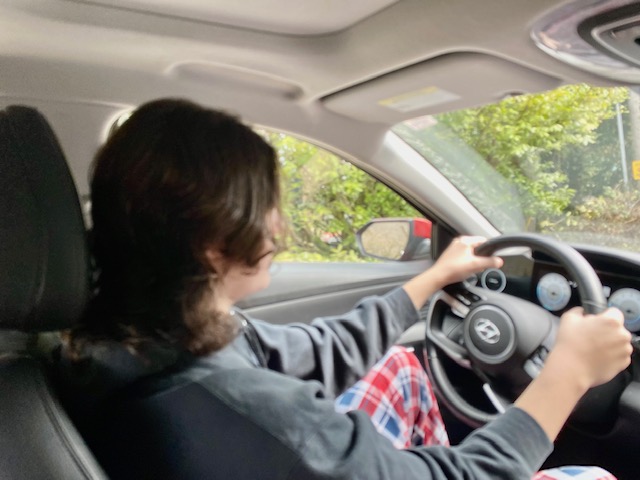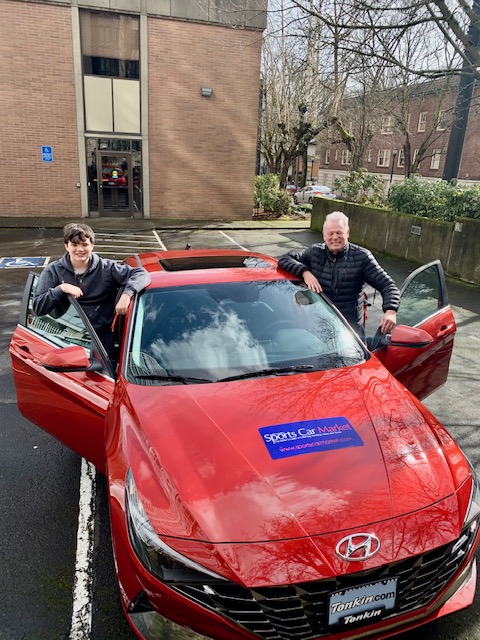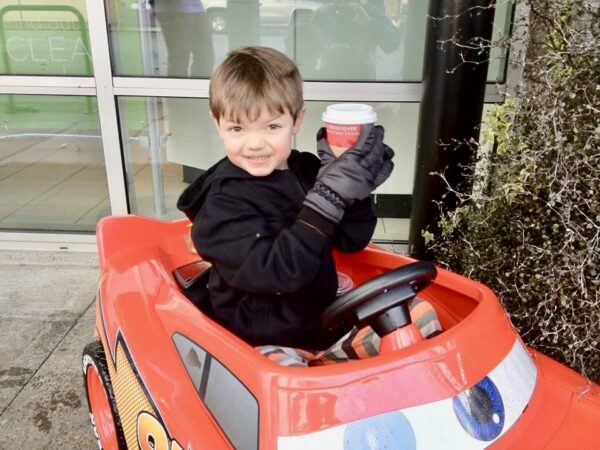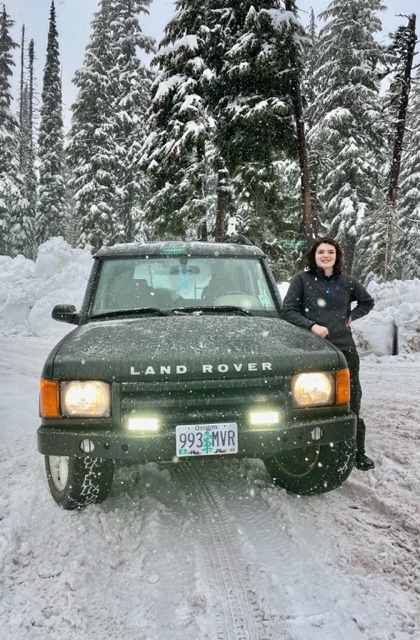
A few months ago, my son Bradley turned 15. He passed the written test and then I signed him up for lessons for street driving from a professional. In the teacher’s Honda CR-V, he had several sessions navigating local streets, and a couple of stints on freeways.
Now it was my turn to go out with him.
While this wasn’t the first child I’ve taught to drive, this time there were differences.
In the past, I had maintained a monomaniacal adherence to “drive a stick first.” But the world has changed since 2007 when my daughter Alexandra started out on our 911 SC.
The roads are more crowded—and crowded with three-ton pickups with oversized tires and distracted drivers.
When I am on my mobility scooter trying to cross a busy street downtown, more often than not cars and pickups just barrel by me, not even giving me the courtesy of slowing down. I’ve had to get bicycle clip-on lights to make me more visible.
I bought a 2021 Hyundai Elantra Limited specifically for the safety features it offers, including front, rear and side proximity detection. Plus, enough airbags to cushion the landing of the Curiosity on Mars.
Backing the car out of my condo garage parking lot was an adventure, as Bradley got used to making several turns while going in reverse, and trying to decode the blue, yellow and red stripes on the car’s backup camera.
When you pull out of our condo, you turn left onto Clay, a heavily trafficked street that feeds directly onto Highway 26, the freeway that runs to the Oregon coast. We got through a couple of stop lights and merged into traffic.
My first few forehead-to-dash encounters came as Bradley adjusted to the brake pedal on the Hyundai. It took far less pressure than that of the CR-V. We experienced drivers adjust to things like that instantly. Not so for those who are new to driving.
I became aware that the most important information I could share with Bradley was for him to watch the brake lights of the cars around him. They are distant early warning indicators that something in the flow of traffic may be about to change.
He found his own natural spacing and kept it. As we crested a hill, he noted the brake lights of the cars in front of him lighting up. I explained that was because drivers often don’t lift off the accelerator as they go from uphill to downhill, their speeds increase, and they brake.
This meant he had to brake as well or he would be on the bumper of the car ahead. At the same time, he needed to watch the brake lights and turn signals of the cars in the lanes on either side of him. A brake light might be the first indicator that a driver is thinking of changing lanes, even before they put on their blinkers.
As Bradley was assimilating all of this, I encouraged him to look eight or ten cars down the road, and get a sense of the traffic pattern. Cars don’t react well when they are asked to suddenly start, stop or turn. Having a situational awareness buys you time to make intelligent decisions.
This will be of critical importance when he is driving a classic car, with their inferior brakes and handling.
We turned off the freeway onto some two-lane back roads. At one intersection while Bradley was deciding whether to turn left, right or go straight we rolled through a stop sign. He saw my right leg pounding the footwell and my right hand going for the “oh-no” handle.
I explained that even when you are making one set of decisions about direction, you have to stay aware of other sorts of traffic control information like stop signs and lights.
There were bicyclists on the two-lane road. I said to him that to pass one, you had to wait until you had plenty of clear space ahead. He pulled alongside a bicyclist and held there, in the oncoming traffic lane. I also explained that once you see you have room to pass, you need to make and complete the pass expeditiously, spending as little time facing oncoming traffic as possible.
I was glad he wasn’t trying to execute a shift from second to third gear at the same time.
The drive home was on a six-lane highway. He got better at watching for brake lights as indicators of traffic flow. He kept his proper space in the lane and merged successfully into his exit lane.
At one point, a driver on the left refused to yield. Consequently, we missed a turn and had to go a few extra blocks to get back on track. I discussed with Bradley that if you can’t make a turn or freeway exit safely, just pass it up and go on to the next one – even if takes you 10 minutes longer. We discussed that adding time to a trip was much smarter than risking an accident. Although, accidents are not always unavoidable.
I was reminded of how many of our driving patterns have become instincts after decades behind the wheel. We automatically give a car a little more gas when climbing, and back off the throttle when descending. We are on alert for stop signs and lights even while making decisions about turning.
I was satisfied with our first outing. After a couple more he will try some sessions in the 1991 Alfa Romeo Spider S4. It’s not as large (or multi-airbag equipped) as the Elantra, but it will offer the responsive feel of a smaller car.
Once he turns 16 and obtains his license, I will enroll him in one of the teenage training programs. Later, as he develops some “autopilot” driving habits, it will be time to introduce him to one of the stick shift cars, which will add an entirely new level of coordinated decisions to his driving experience. I might even direct him to resources like https://www.drivingtest.ca/quebec-driving-test/ for additional preparation.
My takeaway from our session was how important situational awareness is in today’s traffic. And how often multitasking is involved in daily driving. For instance, you are often simultaneously closing the gap to the car in front, while moving to a lane to initiate a turn. So, getting off the brakes, putting the turn-signal on, beginning to turn wheel to the right and checking your mirrors all at once.
We take these things for granted, but they are patterns that need to be taught to a new driver.
He asked if next time out we could go to a Taco Bell drive-through. I’m all in favor of rewards.





Bradley is lucky that his father did not make him learn in a car called a Bradley. Looking ahead for traffic patterns and braking is an essential skill that many drivers refuse to learn. Good progress Bradley!
Great read. I could not stand to hear my girlfriend crunching the gears in my 75 Honda CVCC wagon as I was trying to teach her to drive the only new car I ever brought. My brother took her out and taught her since the grinding gears didn’t bother him, being it wasn’t his car. She learned to be a good driver.
Lucky!!
When I felt my kids understood the basic dynamics of driving a car, i had them drive me everywhere we went. Good weather and bad, interstates and local. They needed to understand everything there was to know before it was their time to drive alone. I am sure it was a pain to them, but when the time came to let them go, I trusted that they were as prepared as they could be.
in the late ’40s/early ’50s in bartlesville, ok, we had about 50 motorcycle/motorbike riders too young for licenses. by the time we got into cars we were pretty aware of how to handle traffic, thin as it was. cops would tell us to just go home; never issued a ticket or confiscated a motorbike. wonderful days…
Reading your blog is always one of the highlights of my week. Thanks!
Thank you for taking the time to impart your wisdom on the next generation on old and new.
I’ll thank you for it!
Keith, Congrats to Bradley. A world of fun and freedom awaits. Sounds like you’ve got new driver training down to a science. My one input would be a reminder to leave the phone put away. Last year my older son was fiddling with his and rear-ended a car stopped at a red light that he thought was green before looking down at a buddy’s text. No injuries, except for my totaled 2014 BMW 328i. Cars can be replaced, sons can’t be. -Scott
McLaughlin
C
Great advice
Thank you